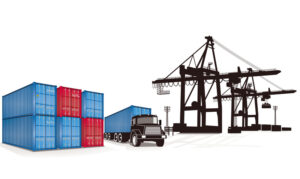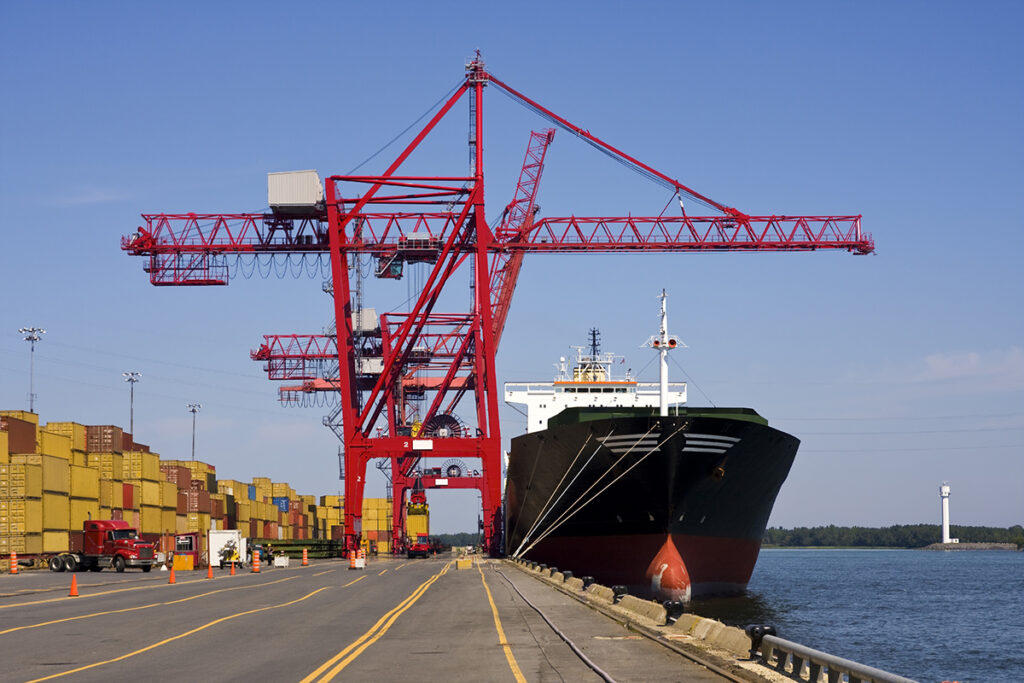Maintenance of equipment must be programmed
By Rawle Baddaloo
All ports, large or small, will have a vast inventory of mechanical equipment that utilize an array of technologies and systems. This can make the port the ‘port of choice’ for the main liners, or otherwise have it classed as ‘undependable’.
 Depending on the size of the port, the equipment can range from New Panamax Ship to Shore Gantries through to mobile harbour cranes and a plethora of yard equipment. The common characteristic that identifies efficient ports is maintenance. If there is no maintenance the port is of no consequence. Handling rates will be affected and ship turnaround time, so vital in the logistics chain, will force lines to avoid the Port completely. It is clear that the above speaks to container operations.
Depending on the size of the port, the equipment can range from New Panamax Ship to Shore Gantries through to mobile harbour cranes and a plethora of yard equipment. The common characteristic that identifies efficient ports is maintenance. If there is no maintenance the port is of no consequence. Handling rates will be affected and ship turnaround time, so vital in the logistics chain, will force lines to avoid the Port completely. It is clear that the above speaks to container operations.
Planning for every vessel is extremely important. In the case of fewer movements, as is on smaller vessels, it is not difficult. However, larger vessels and greater numbers of movements call for extensive planning.
Ports generally like to have a five-day notice of a vessel’s arrival. In short-haul trades this is not always possible. However, it does not preclude the ship from sending a proposed discharge/load plan making certain assumptions for port operations in other countries before arriving at the port of the writer. The ship operator can fill in the last port movements to advise the port before arrival. Modern technology and Cargo management systems allow for this.
Planning load and discharge procedures takes the following into consideration: ship-to-shore equipment; receiving and distribution equipment; transit equipment; spreader bars (if the equipment is needed); and, storage yard equipment. This is not an exhaustive list. There will be subsets in each area.
Depending on the size of the port, the standard ship-to-shore transfer equipment may be a gantry or a less sophisticated crane. The number of cranes per vessel utilized would have been decided after evaluation of the ship’s cargo declaration hours or days before. For this exercise I will address one-crane operations.
 The different types of equipment utilized after the ship to shore crane choice will be the receiving and distribution equipment. Ship-to-shore gantries operate at higher speeds than harbour cranes and a lot faster than cranes that were not purpose-built. On the other hand, the speed of handling is usually reflective of the skill of the crane operator. The effective Port Manager will know where his organization’s strengths and weaknesses are and add or decrease yard equipment, depending on the efficiency of the ship to shore operations.
The different types of equipment utilized after the ship to shore crane choice will be the receiving and distribution equipment. Ship-to-shore gantries operate at higher speeds than harbour cranes and a lot faster than cranes that were not purpose-built. On the other hand, the speed of handling is usually reflective of the skill of the crane operator. The effective Port Manager will know where his organization’s strengths and weaknesses are and add or decrease yard equipment, depending on the efficiency of the ship to shore operations.
The equipment moving the cargo are trucks which are generally lined up: to receive single or tandem loads; then to proceed to the storage yard. In some instances, reach stackers or other container handlers may do the dissemination of containers from under the crane. However, these two modes are not as efficient. Whatever is used must ensure that the crane’s cycle is not interrupted, as this will lead to slower discharge rates. (Spreader bars were mentioned earlier but this will only be applicable if the port does not have automated spreader bars.)
On receipt of the discharged container or containers, the equipment takes it to the storage yard. The Yard configuration usually dictates the type of equipment best to use. Open and linear yards will be equipped with either rubber-tyred gantries, rail mounted gantries or straddle carriers. Stacking in rows three deep in different layouts are usually handled by reach stackers. One level storage can be handled by any other types of equipment but requires considerably more yard space.
The type of equipment is not so important. The key point is to manage the vessel as expeditiously as possible with properly working equipment operated by trained personnel.
The Port Manager will always have in mind thoughts as to whether there is sufficient equipment or if there is need to have some redundancy standing by. The operations must have the flexibility to remove redundant pieces to another operation. It is a serious juggling act. Preplanning will consider which storage yard to be used. Containers that are discharged may be those shifted on board to access local cargo, and to be immediately loaded back. Those for final discharge at the port and those that are discharged for transshipment. All containers will be stored according to size for ease of storage. Refrigerated containers of course will be in a specific area where power is available to support the reefers. These must all be kept apart to ensure no errors are made, for example, loading back discharged containers.
Generally, discharge of containers is done before loading back local cargo. There are instances where load back might be immediate in certain bays depending upon stability and location of the containers. These matters will come up in the pre planning stages of the vessel’s operations hence the need to have the advance information for proper planning.


People
While this essay speaks to equipment, no productivity occurs without people, skilled staff at each point of the operation. There is the need for close monitoring of the staff as the highly skilled high stress jobs must have on time relief for personnel to ensure continuity of safe operations as well as optimum productivity. It is not normal and not advisable under standard conditions to have a high-speed crane operator operate for more than three to four hours nonstop. In mega ports, two-hour spells are common. I would advise and have utilised 3-hour spells. But, conditions can change and so it must be closely monitored.
Equipment
Maintenance of equipment must be programmed in between ship calls unless there is an emergency. Some ports will have a degree of redundancy usually with yard equipment. Prohibitive costs make it impossible to do the same for ship to shore equipment so there must be a rigorous trouble shooting and maintenance programme. The ideal situation is to standardise equipment as far as possible. This reduces the total spare parts and consumables inventory. It also allows utilization of parts from older derelict equipment. And familiarity of equipment by the maintenance and operating crew is not an insignificant benefit.
Civil maintenance
 Heavy equipment puts high stresses on the surface of the yard. It is common to have axle loads of over 80 tonnes when moving large containers.
Heavy equipment puts high stresses on the surface of the yard. It is common to have axle loads of over 80 tonnes when moving large containers.
The short axis in which the equipment turns produces a grinding effect, which speeds up the deterioration of the yard’s surface. This civil maintenance must also be factored into the scheme of things as uneven surfaces are unsafe and will reduce the speed at which equipment moves over the ground.
Ship-to-shore gantry cranes and mobile harbour cranes will have built in scales on the spreader. As such, the crane operator is immediately aware of the weight. It is not uncommon to find that erroneous declarations are made. The two common areas are weights and contents.
Many containers carrying dangerous according to the IMDG Code are not declared. This, besides being a dangerous practice, will impact on the port’s storage procedures. Overweight containers may not be handled, depending on the ports lifting capabilities. These two cases can slow down a smooth operation.
Loading back
Be it empty, for transshipment or full, containers for export all have peculiar requirements. At pre-planning, containers for back loading will be staged. In ports where space is not a problem, a mirror image is created ashore to reflect the loaded ship and the containers are moved from storage as the ship requires them, Safety/stability issues take priority.
Empty containers are now a real concern. Exporters need the empty boxes that are now left at receiving ports all over the world, taking valuable storage space when they should be at the exporting ports. The Port Manager must convince the Master to remove empties to the maximum as the logistics chain is once again under threat.
Once the ship is fully loaded, the last jobs are the proper lashing of the containers on deck. Earlier on hatch covers would have been properly placed over the hold, as loading on hatch covers is quite common. Only when the vessel is secured to the Master’s satisfaction can the vessel leave.
The Port Manager must be on top of the operations as expected. As the situation becomes more complex, it will be expected that various specialists will make up the team to keep the Port Manager fully appraised of the situation at any given time. The team will include specialists in equipment operations, equipment maintenance, health, safety and labour; and, of course, a specialist who constantly monitors the pulse of the logistics chain worldwide. []
- First published: August 1, 2022.

*Capt. Rawle Baddaloo, Past President of the Caribbean Shipping Association, is Co-leader of Caribbean Marine Environment Protection Association (CARIBMEPA).





